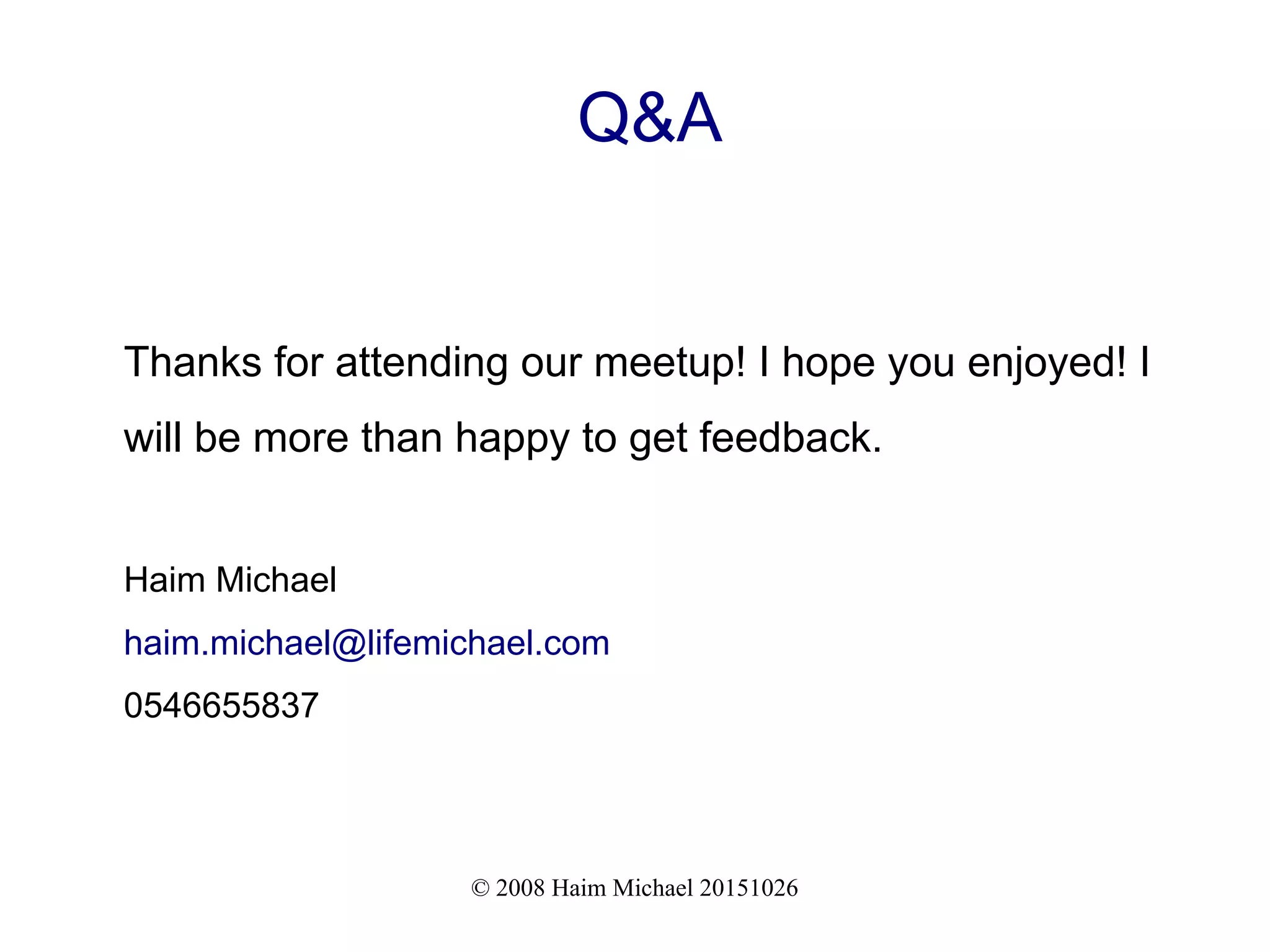This document presents an overview of new features introduced in Java 11, including the removal of certain deprecated modules, enhanced string methods, and the introduction of an improved HTTP client API. It highlights significant changes such as the deprecation of the Nashorn JavaScript engine, the introduction of ZGC (a low latency garbage collector), and experimental features like the Epsilon garbage collector. The document also provides code examples and practical insights into utilizing these new features in programming.

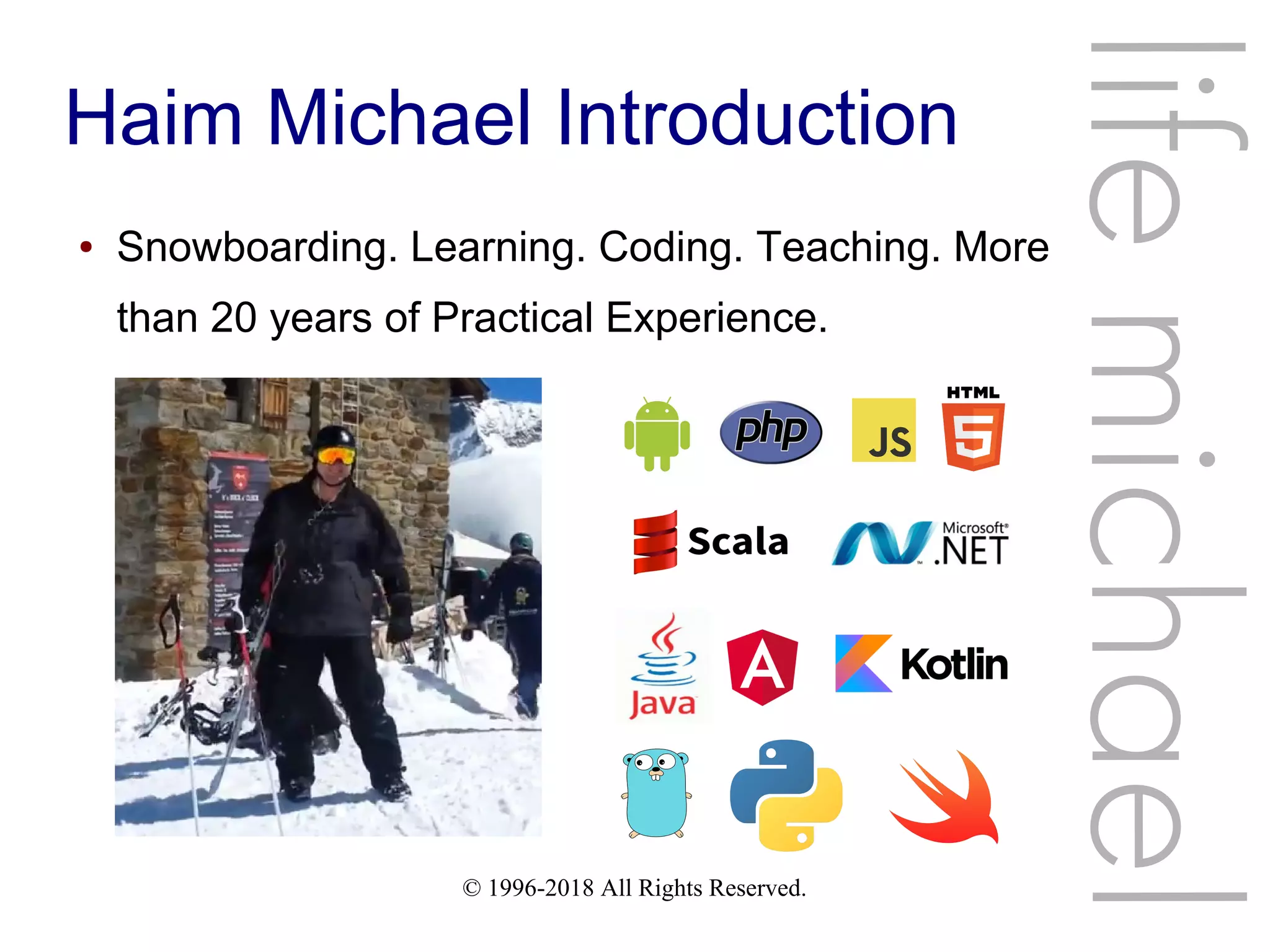
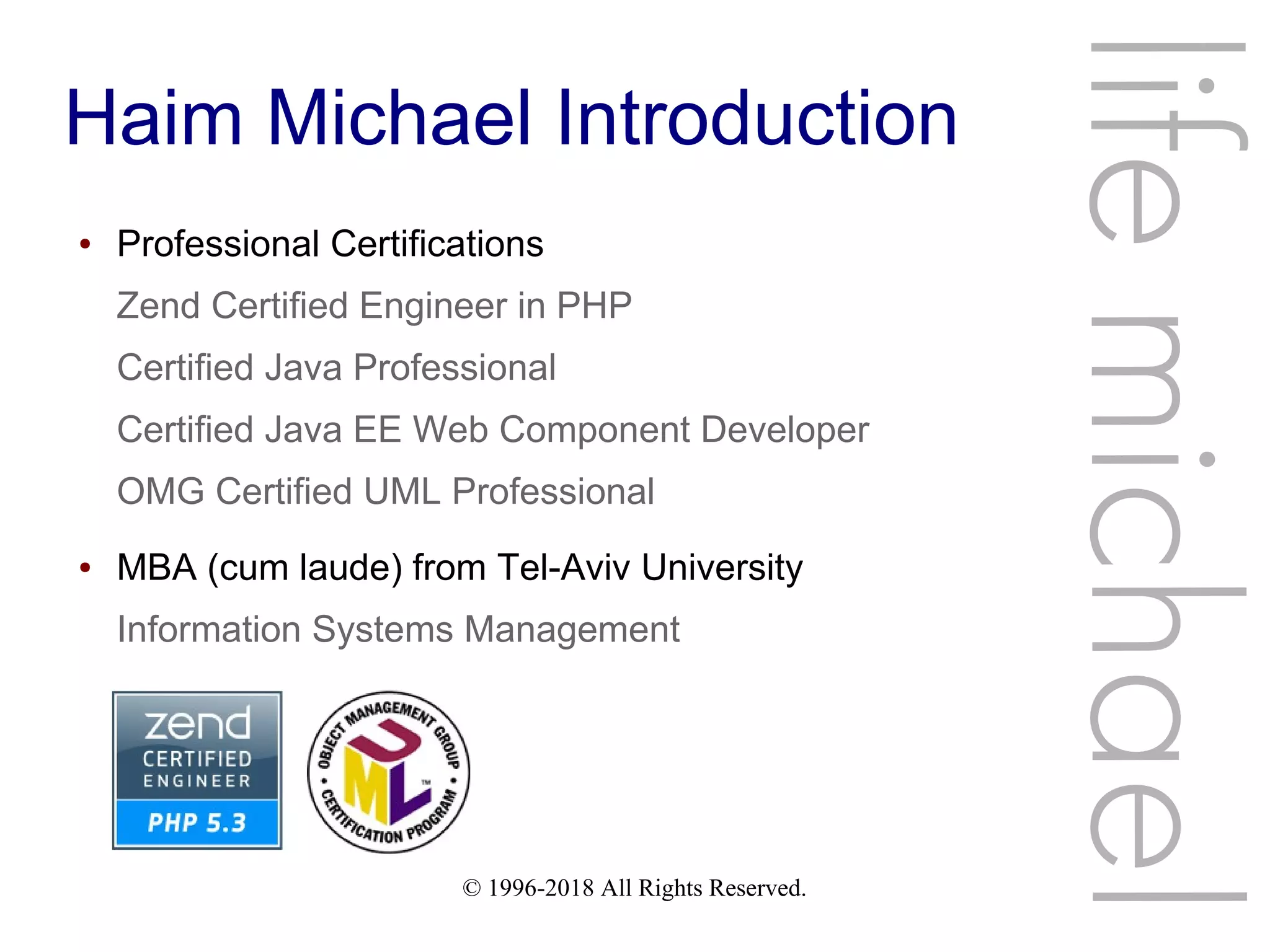
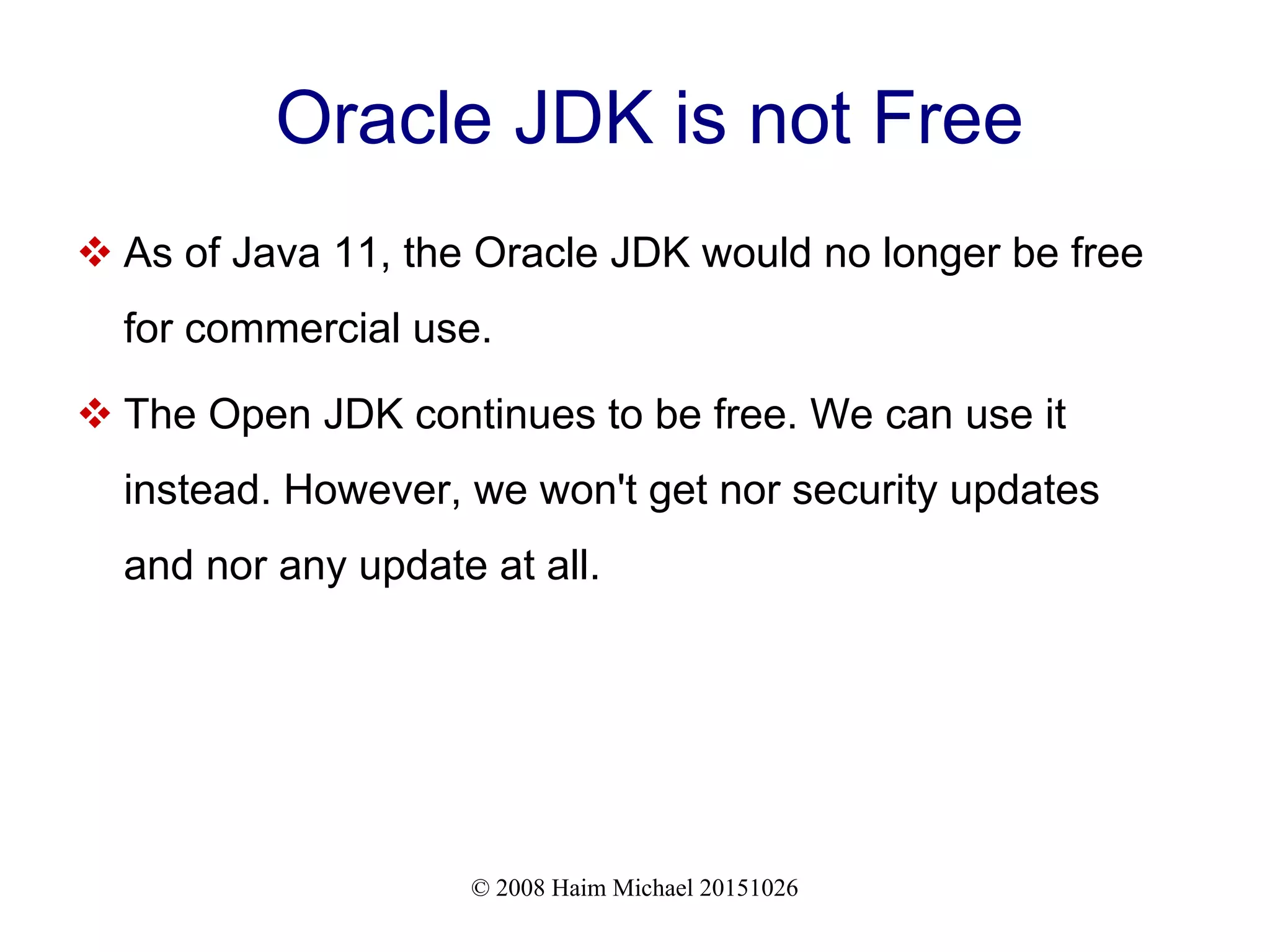
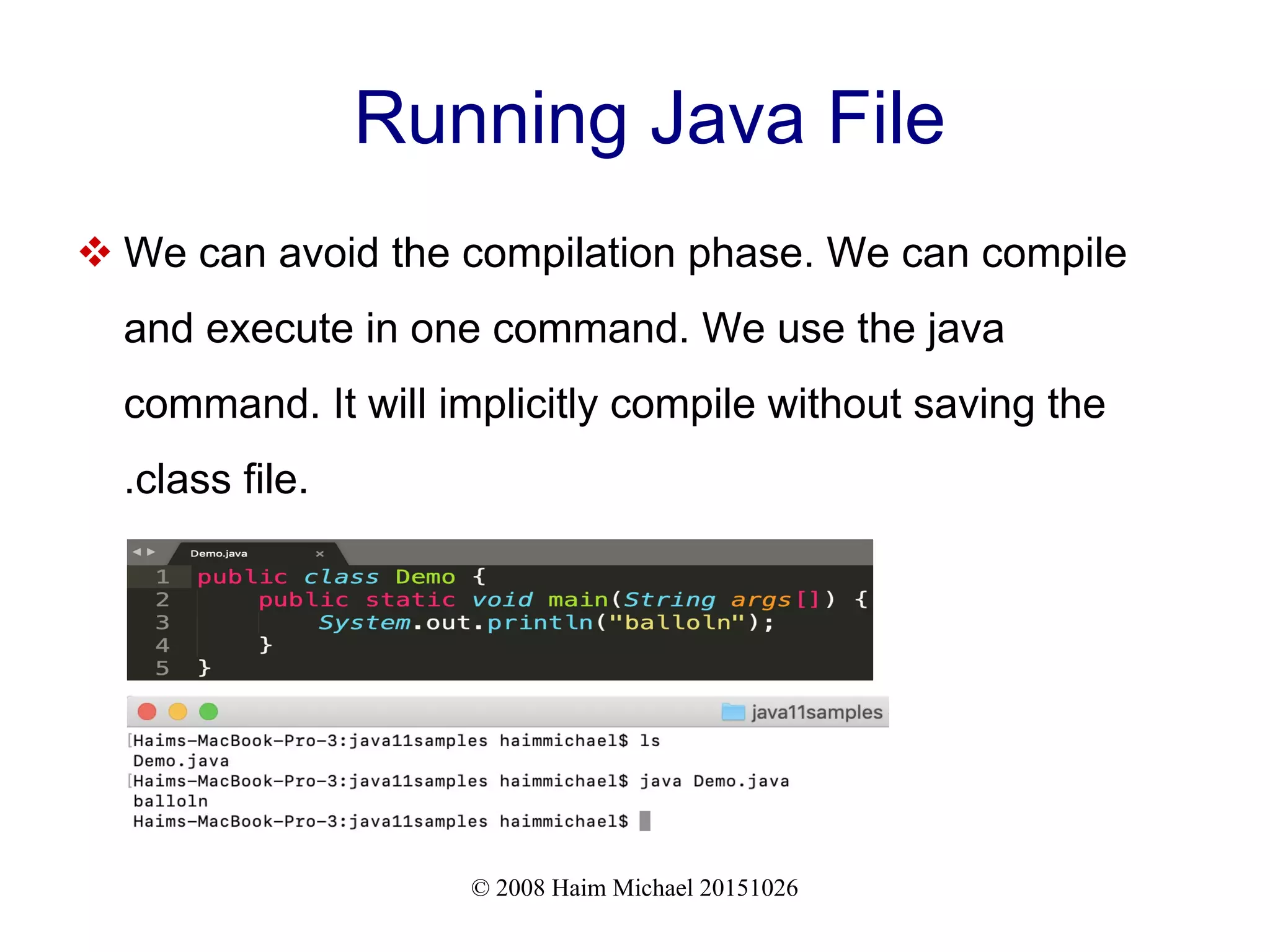
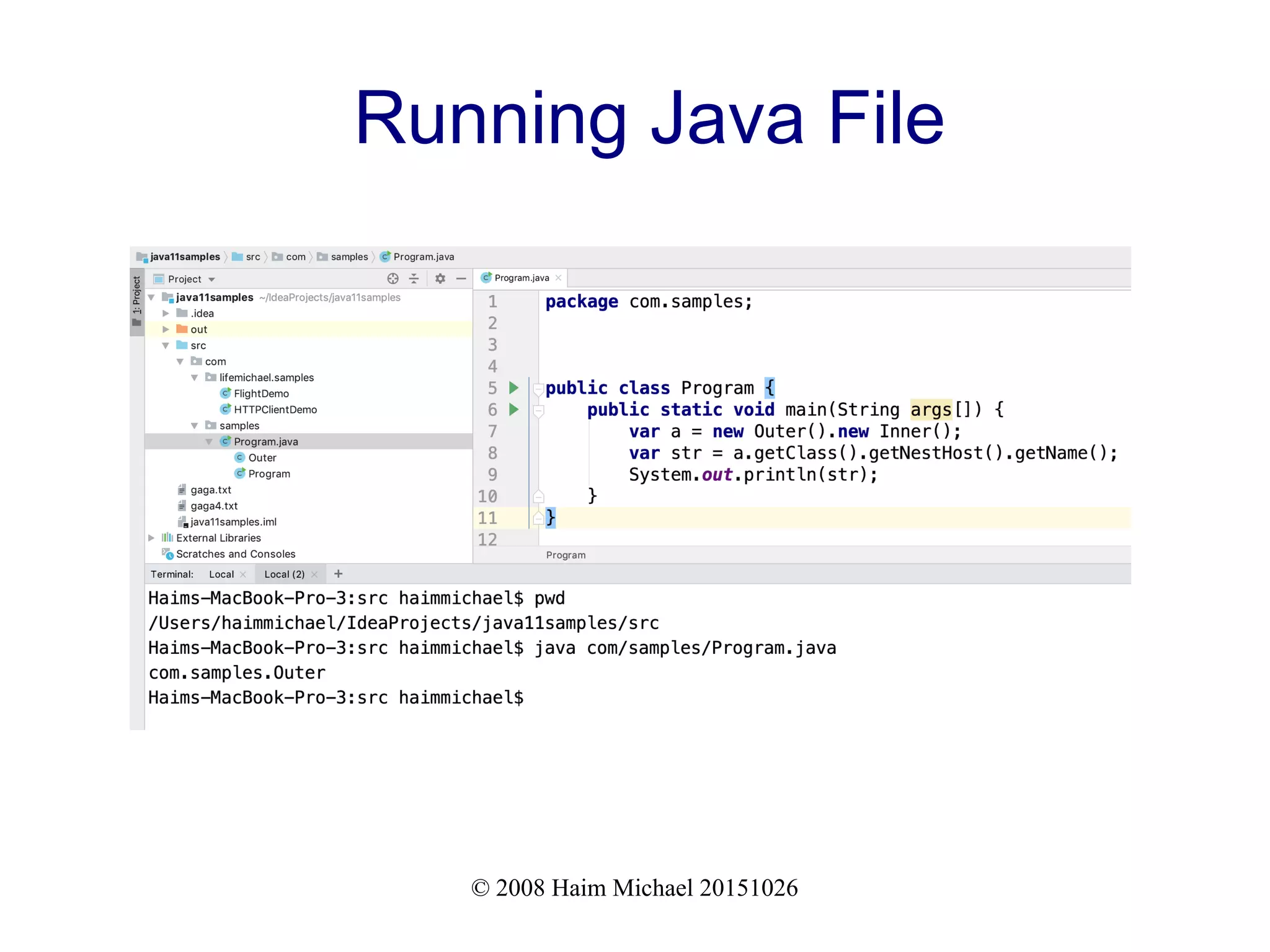
![© 2008 Haim Michael 20151026 Java String Methods The isBlank() method checks whether the string is an empty string, meaning... whether the string solely includes zero or more blanks. String with only white characters is treated as a blank string. public class Program { public static void main(String args[]) { var a = ""; var b = " "; System.out.println(a.isBlank()); System.out.println(b.isBlank()); } }](https://image.slidesharecdn.com/java1120190604slides-190604211256/75/Java11-New-Features-7-2048.jpg)
![© 2008 Haim Michael 20151026 Java String Methods The lines() method returns a reference for a stream of strings that are substrings we received after splitting by lines. public class Program { public static void main(String args[]) { var a = "wenlovenjavanandnkotlin"; var stream = a.lines(); stream.forEach(str->System.out.println(str)); } }](https://image.slidesharecdn.com/java1120190604slides-190604211256/75/Java11-New-Features-8-2048.jpg)
![© 2008 Haim Michael 20151026 Java String Methods The strip(), stripLeading()and the stripTrailing methods remove white spaces from the beginning, the ending and the remr of the string. It is a 'Unicode-Aware' evolution of trim(); public class Program { public static void main(String args[]) { var a = " we love kotlin "; var b = a.strip(); System.out.println("###"+b+"###"); } }](https://image.slidesharecdn.com/java1120190604slides-190604211256/75/Java11-New-Features-9-2048.jpg)
![© 2008 Haim Michael 20151026 Java String Methods The repeat() method repeats the string on which it is invoked the number of times it receives. public class Program { public static void main(String args[]) { var a = "love "; var b = a.repeat(2); System.out.println(b); } }](https://image.slidesharecdn.com/java1120190604slides-190604211256/75/Java11-New-Features-10-2048.jpg)
![© 2008 Haim Michael 20151026 Using var in Lambda Expressions As of Java 11 we can use the var keyword within lambda expressions. interface Calculation { public int calc(int a,int b); } public class Program { public static void main(String args[]) { Calculation f = (var a, var b)-> a+b; System.out.println(f.calc(4,5)); } }](https://image.slidesharecdn.com/java1120190604slides-190604211256/75/Java11-New-Features-11-2048.jpg)
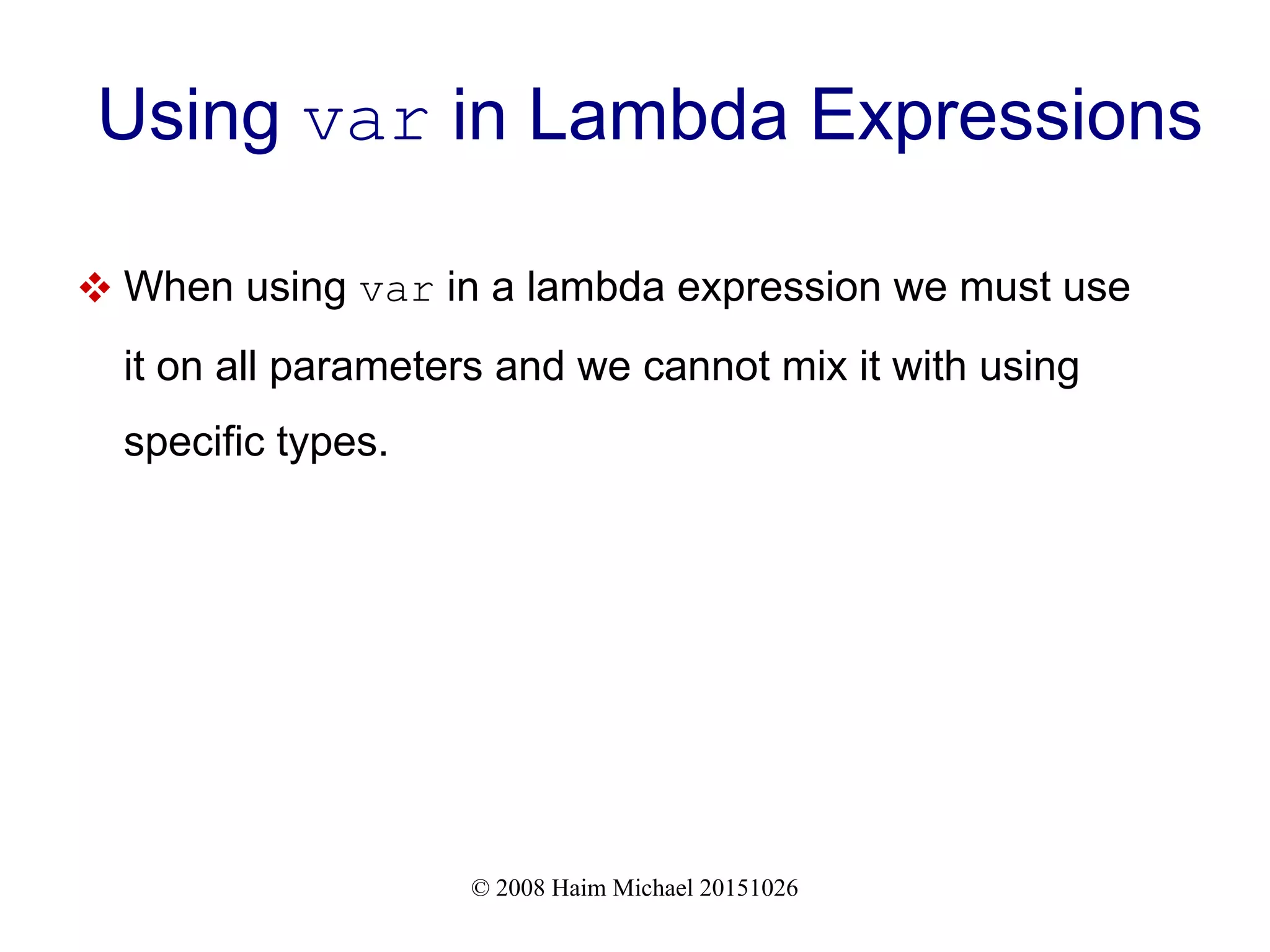
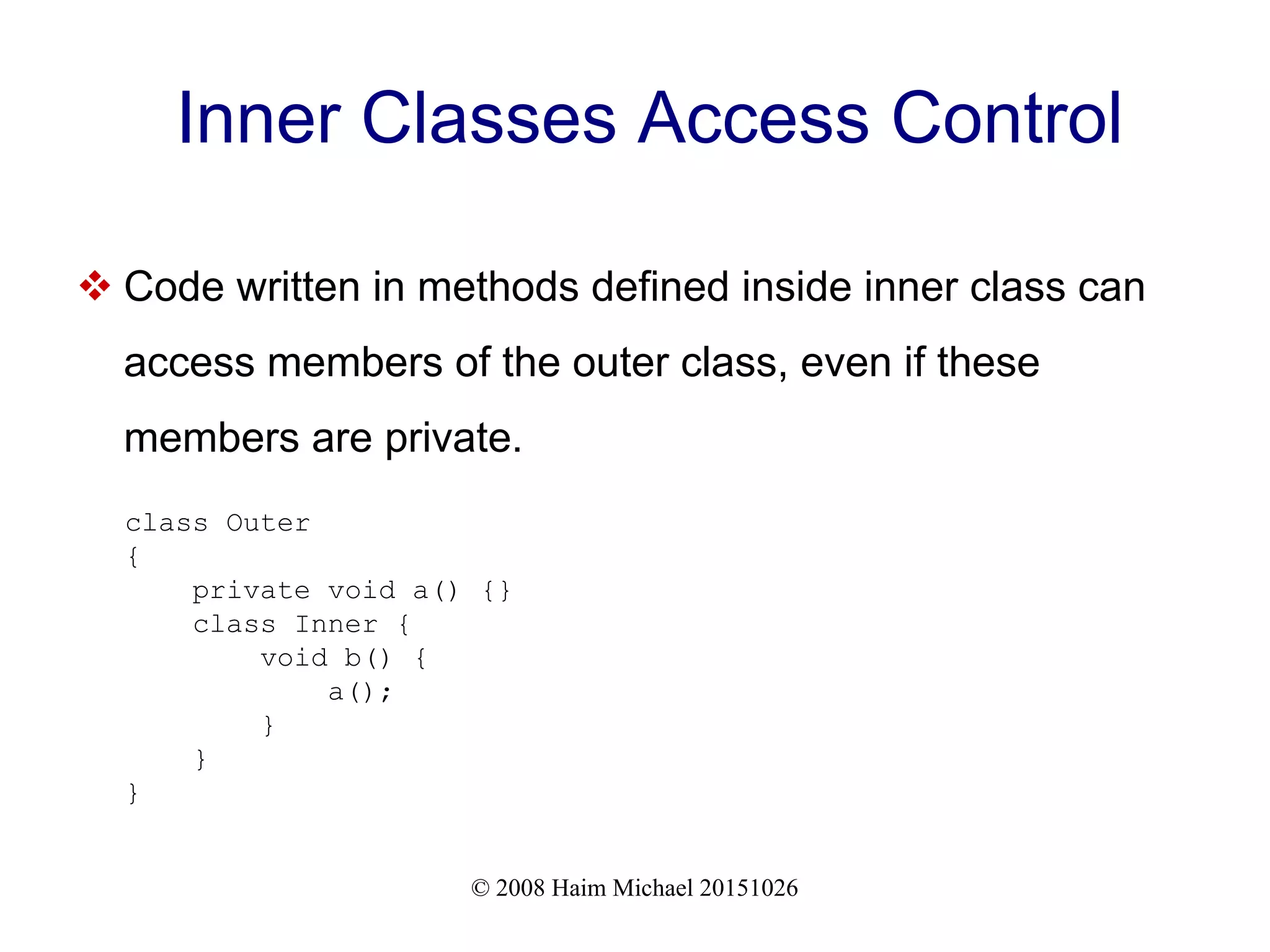
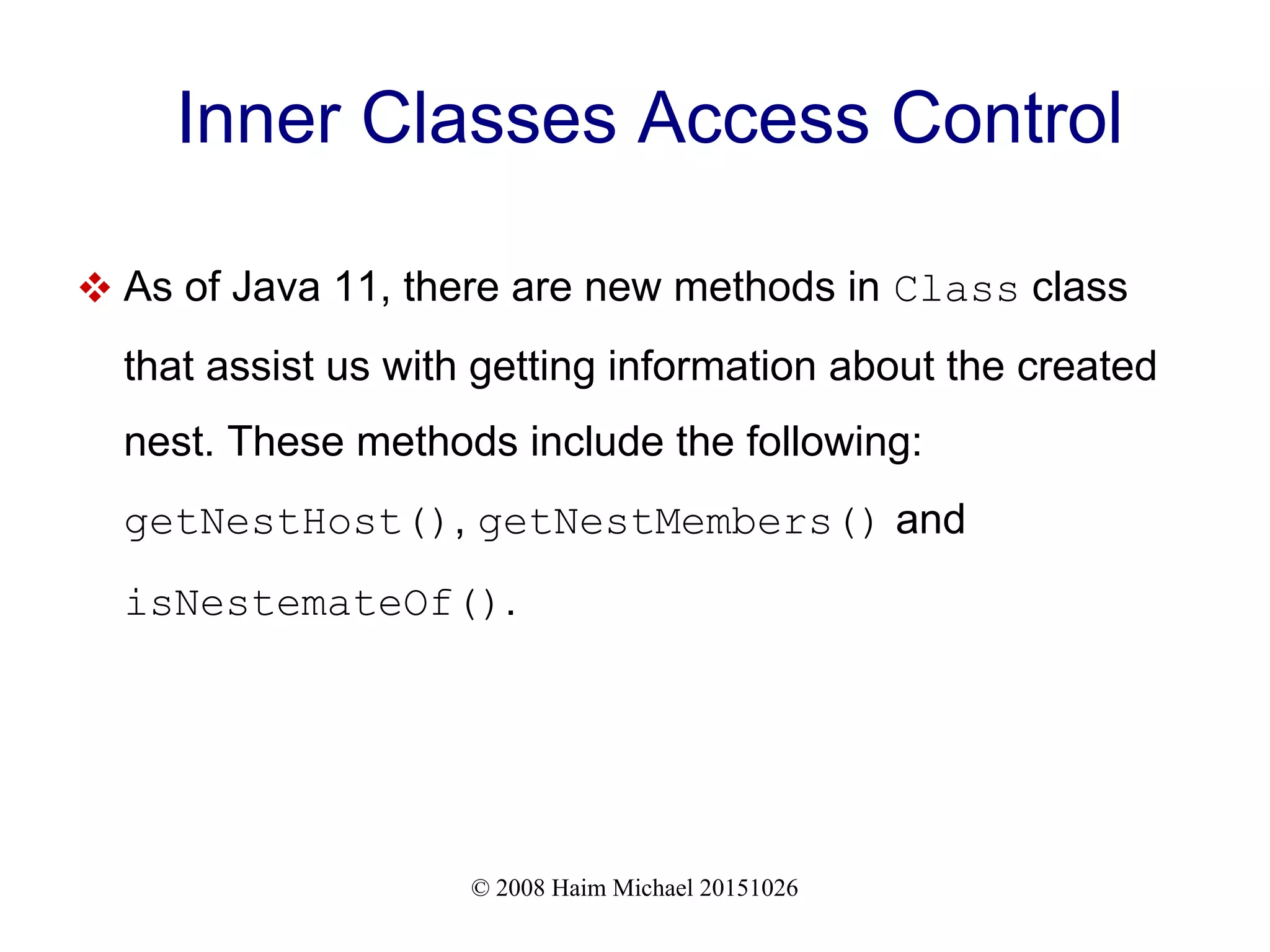
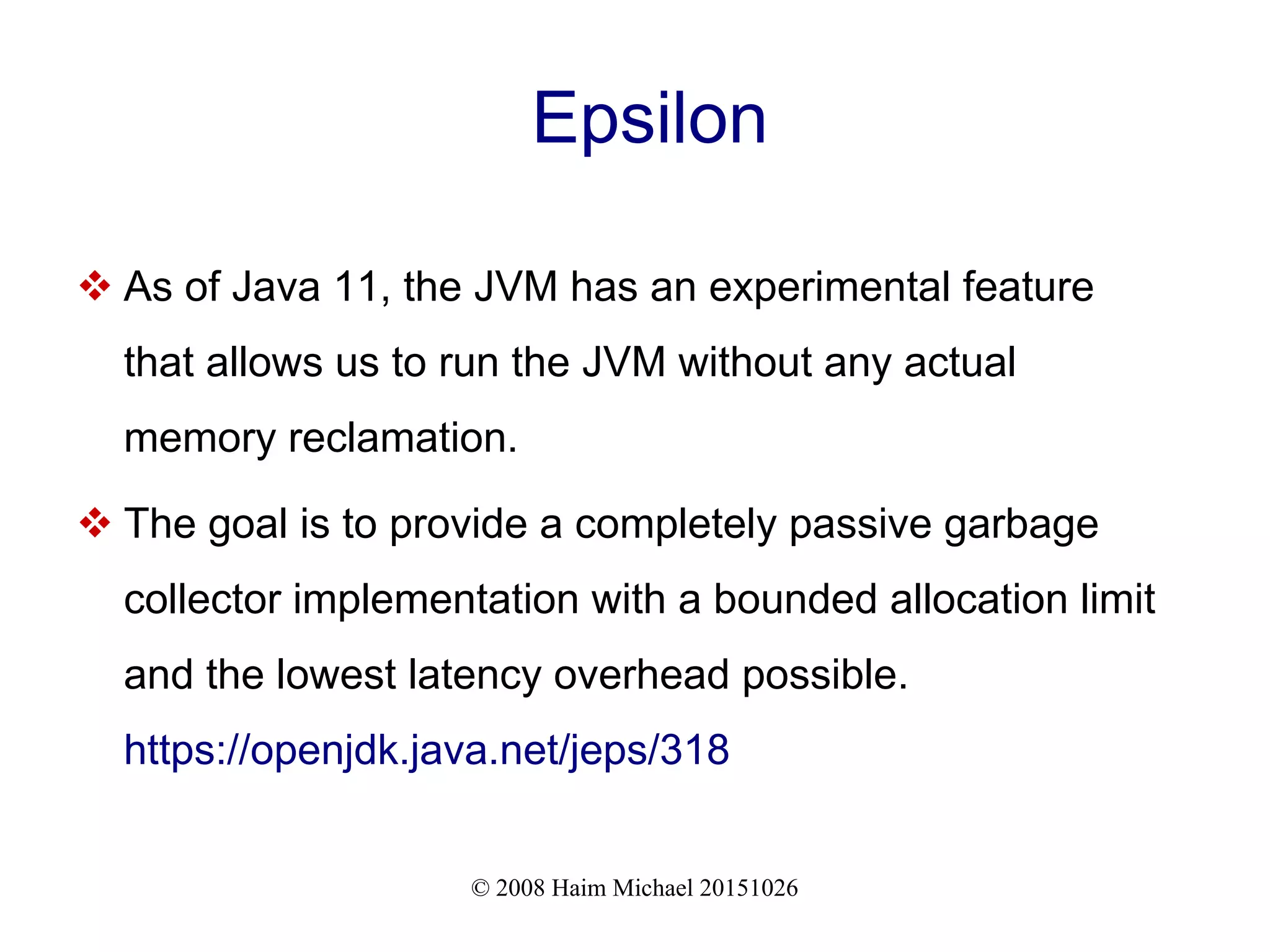
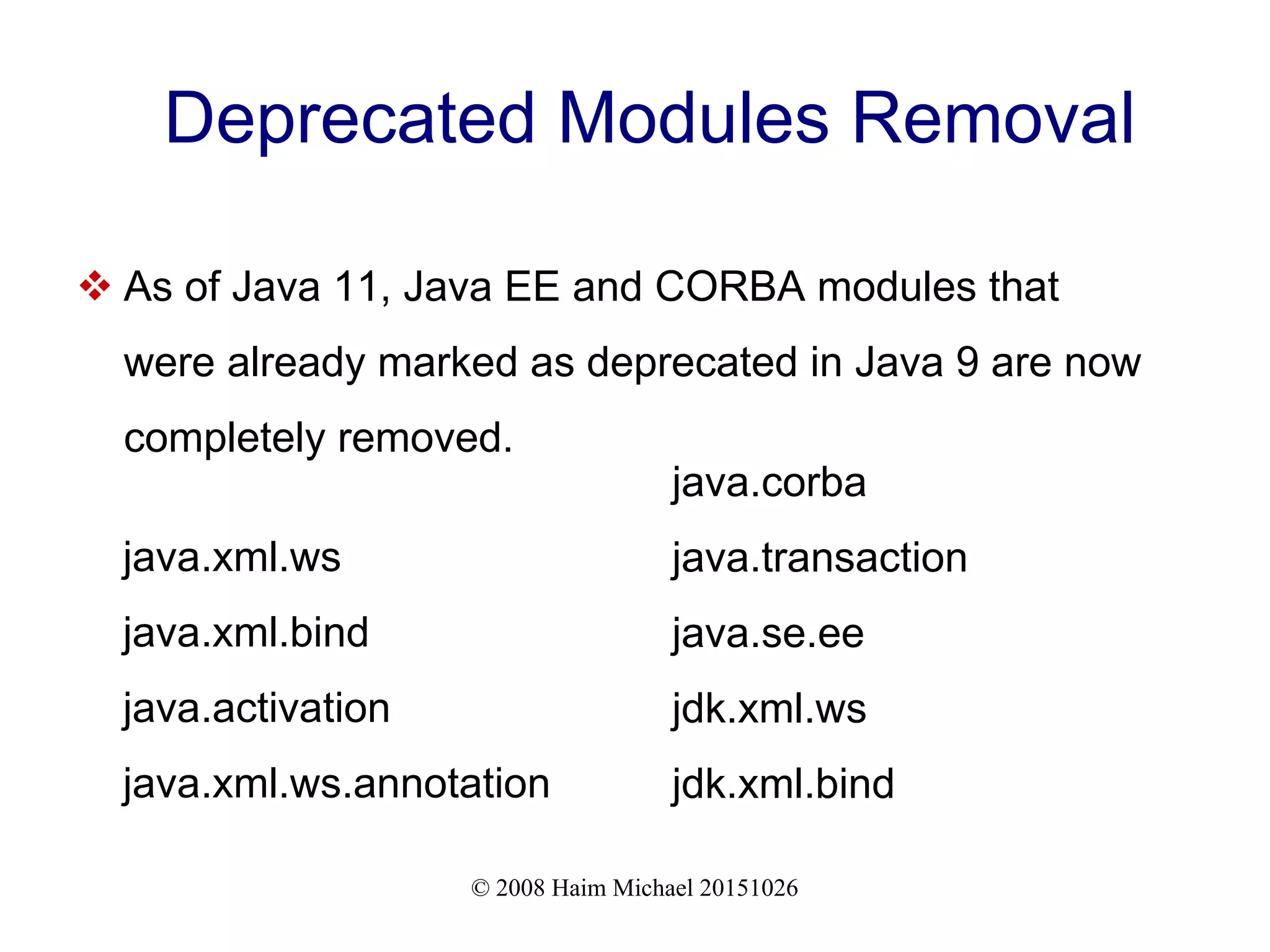
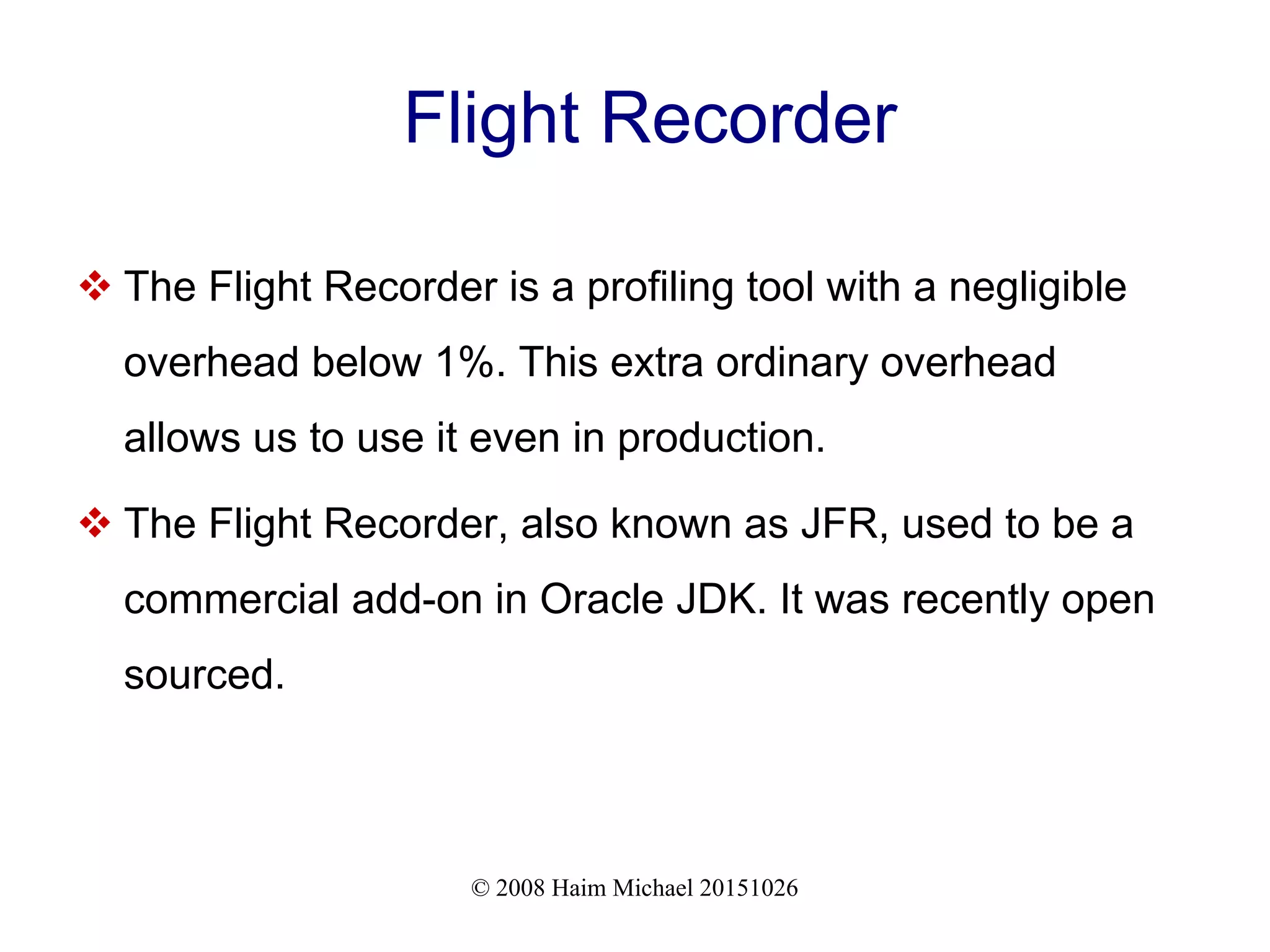
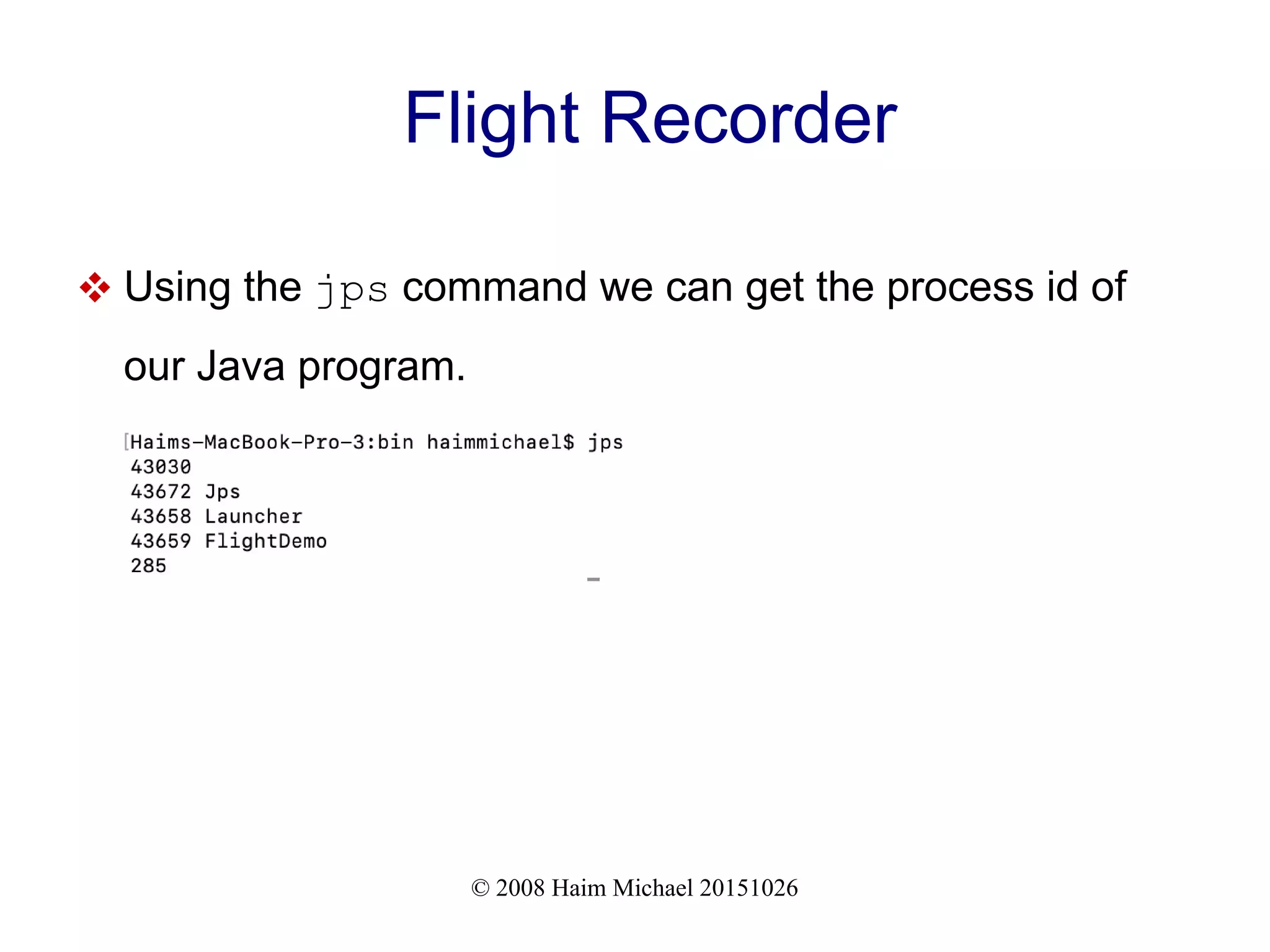
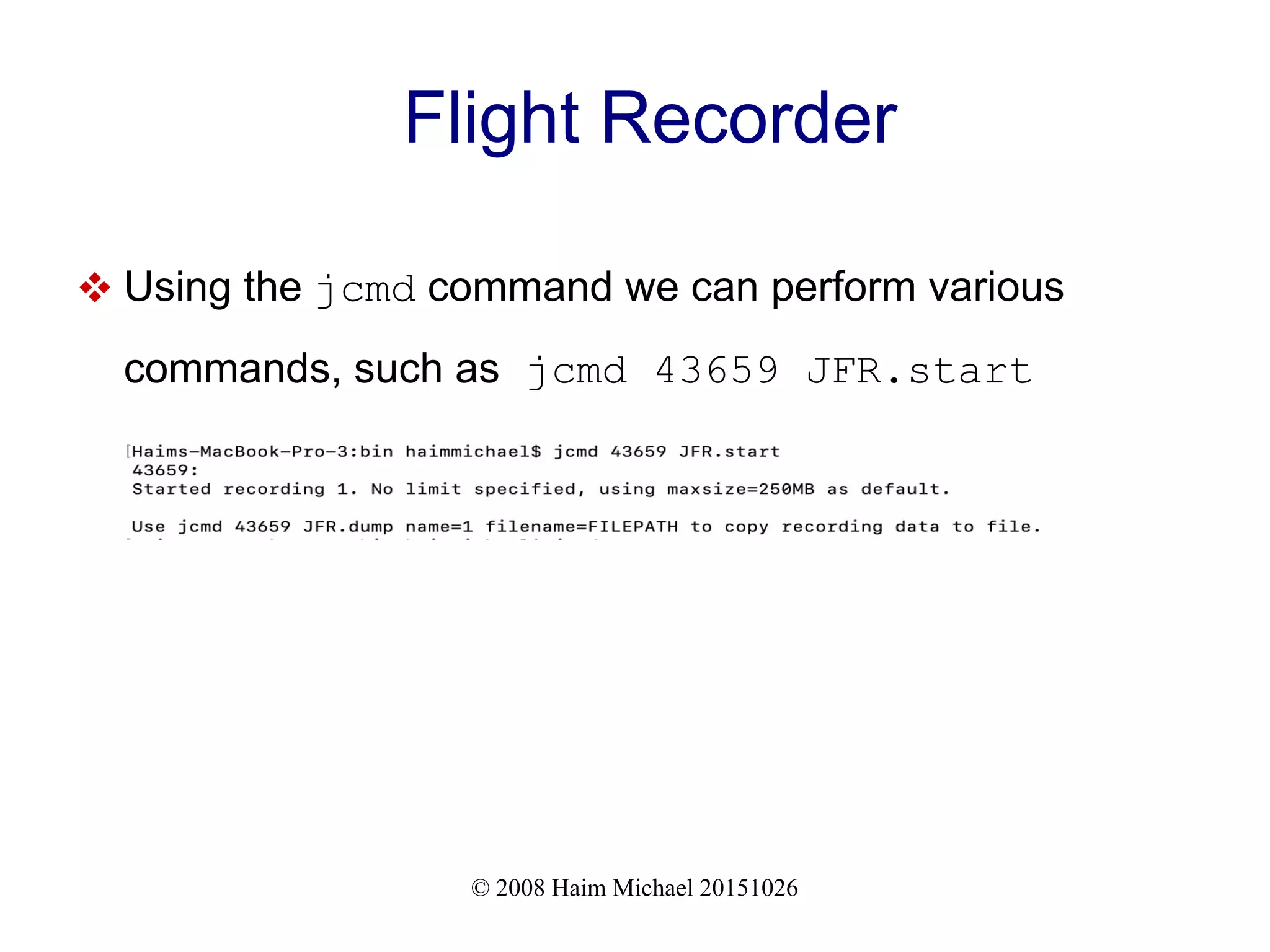
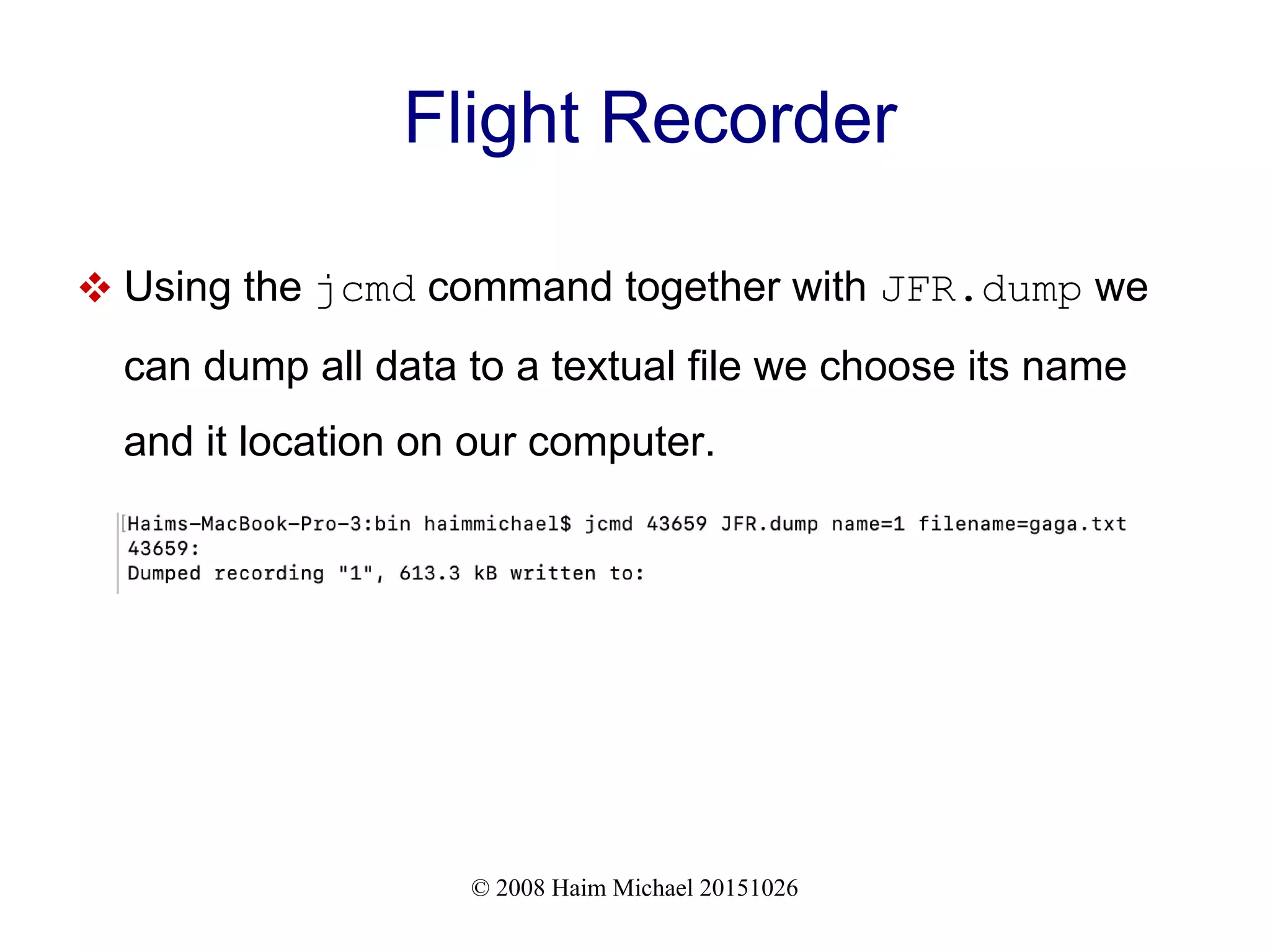
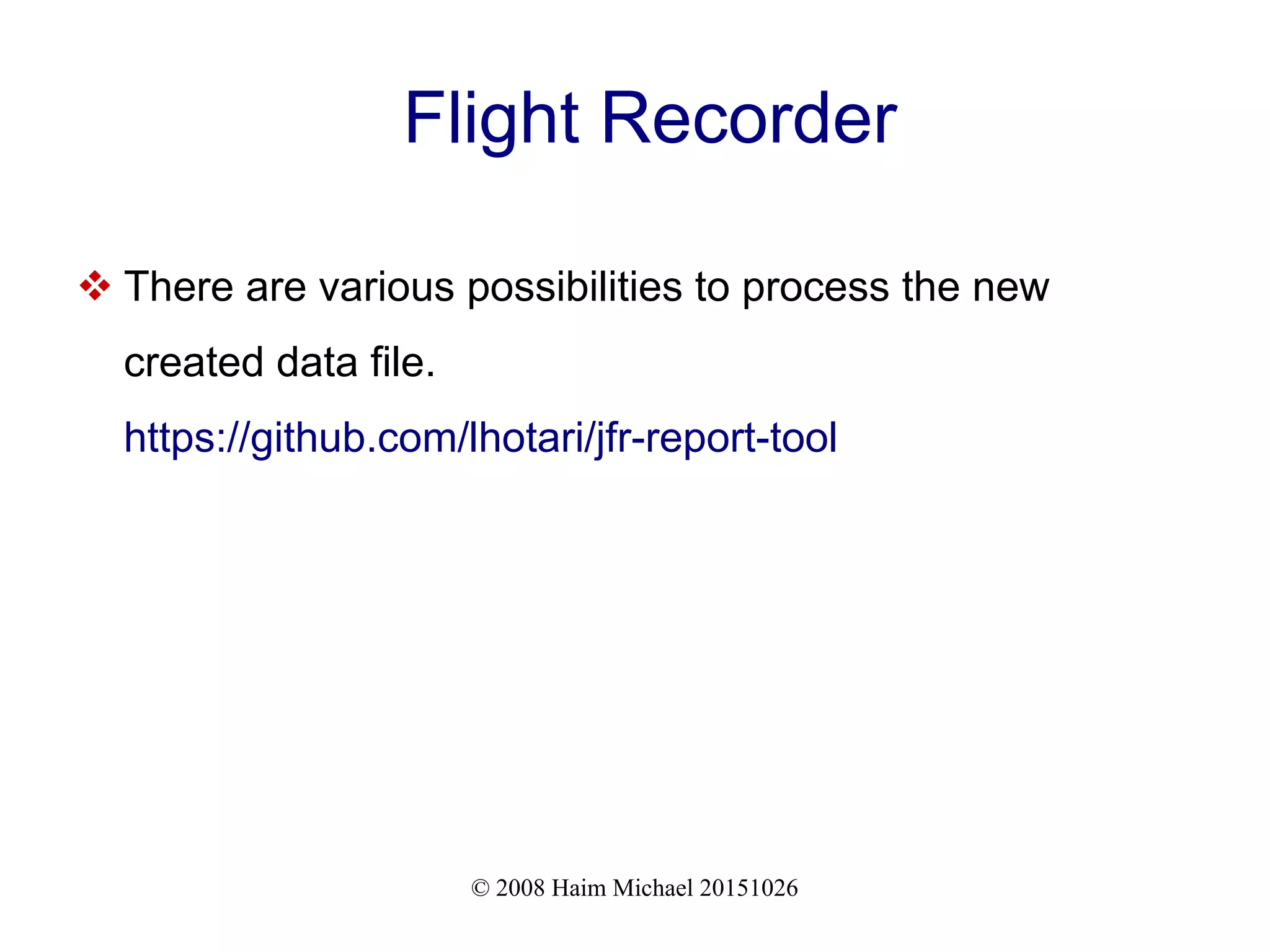
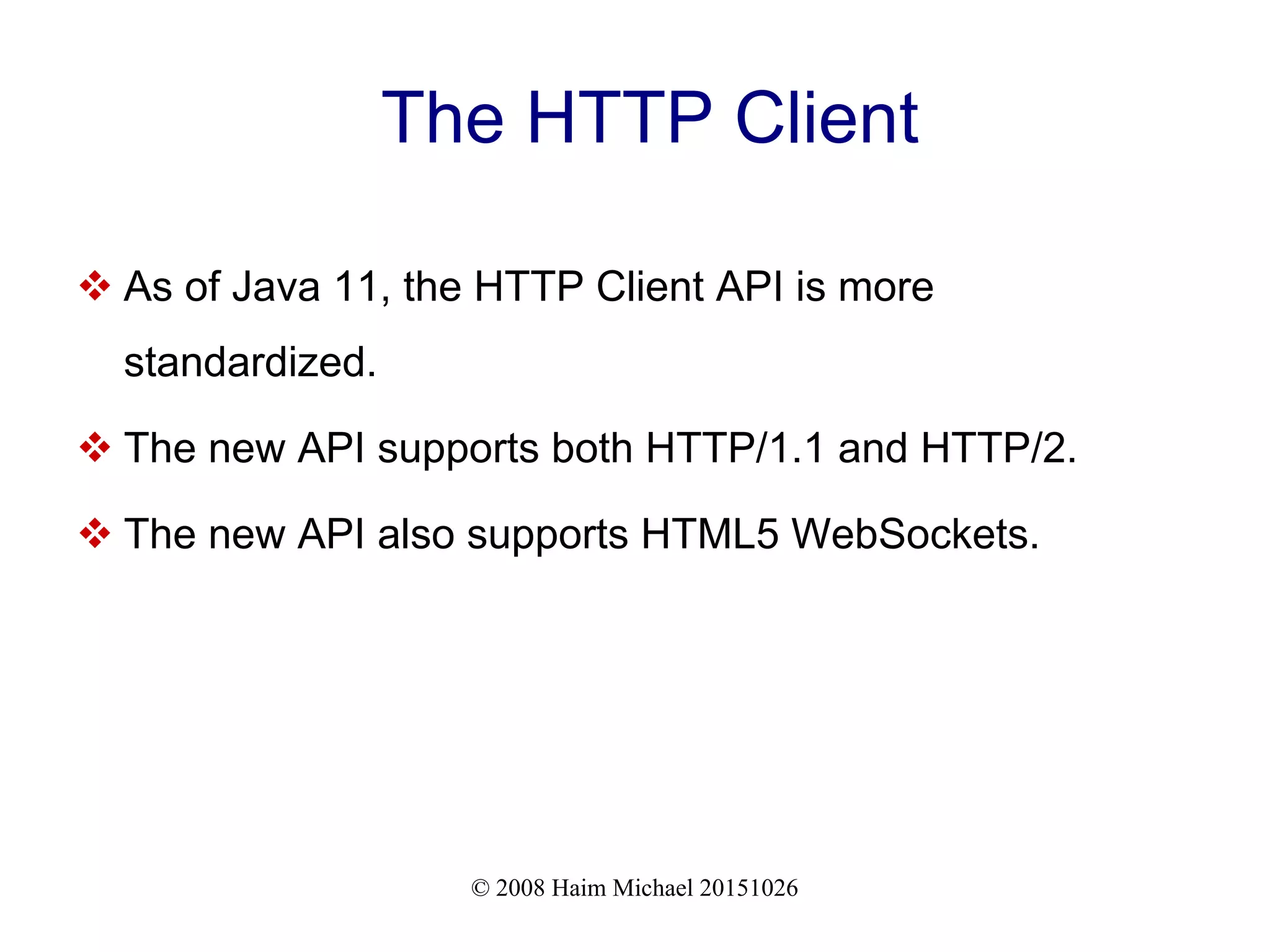
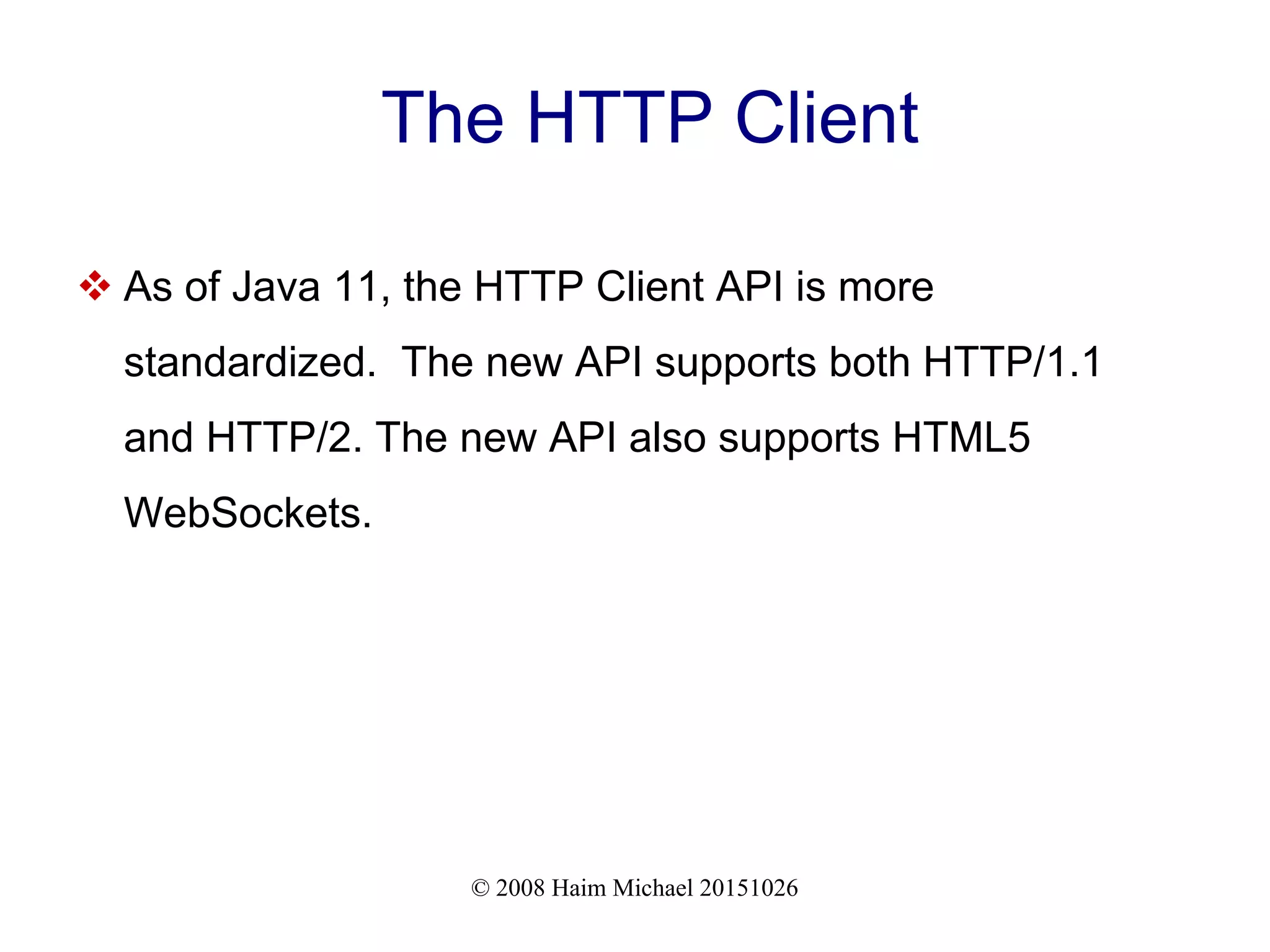
![© 2008 Haim Michael 20151026 The HTTP Client package com.lifemichael.samples; import java.io.IOException; import java.net.http.*; import java.net.*; import java.net.http.HttpResponse.*; public class HTTPClientDemo { public static void main(String args[]) { HttpClient httpClient = HttpClient.newBuilder().build();](https://image.slidesharecdn.com/java1120190604slides-190604211256/75/Java11-New-Features-24-2048.jpg)
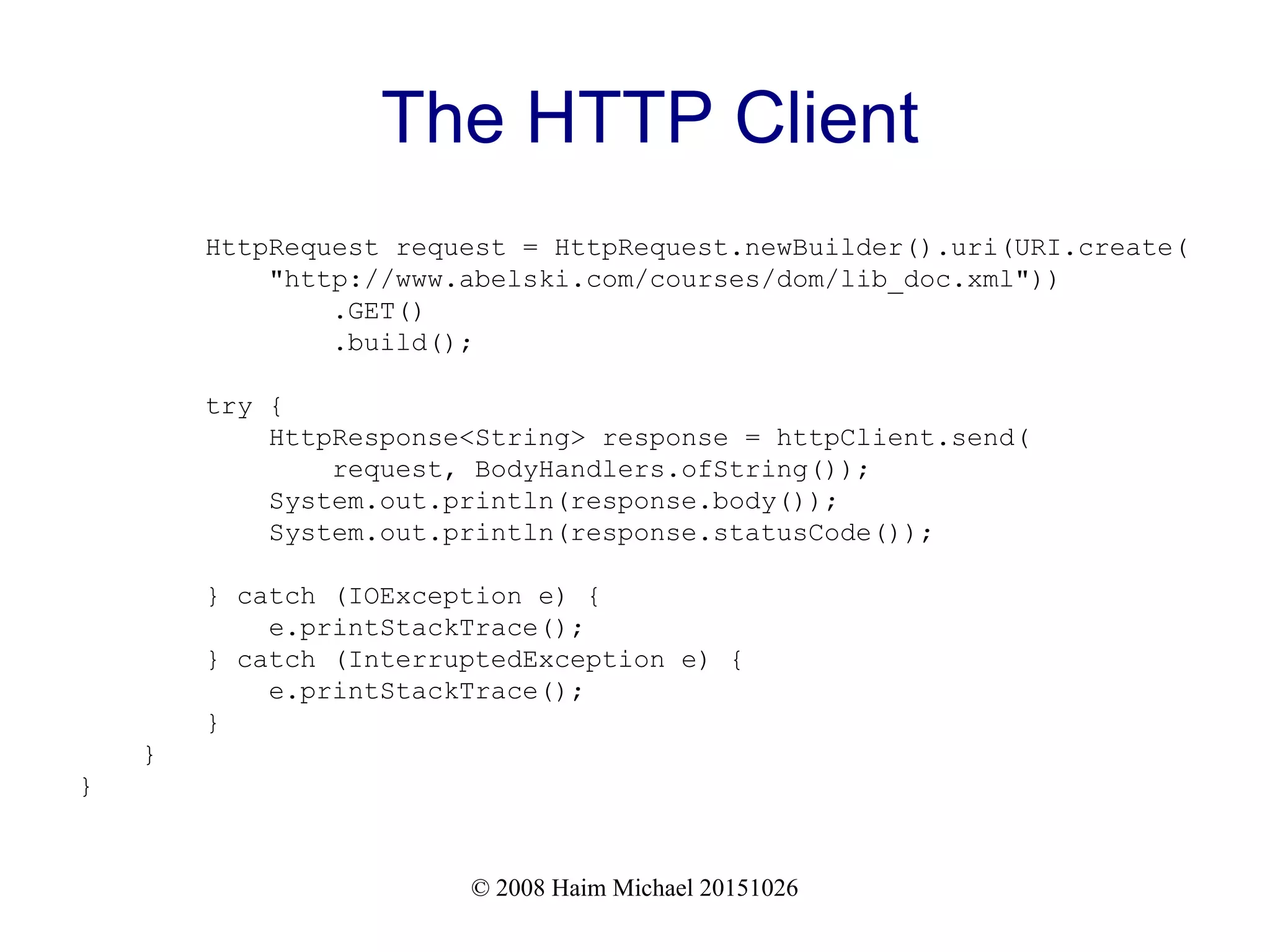
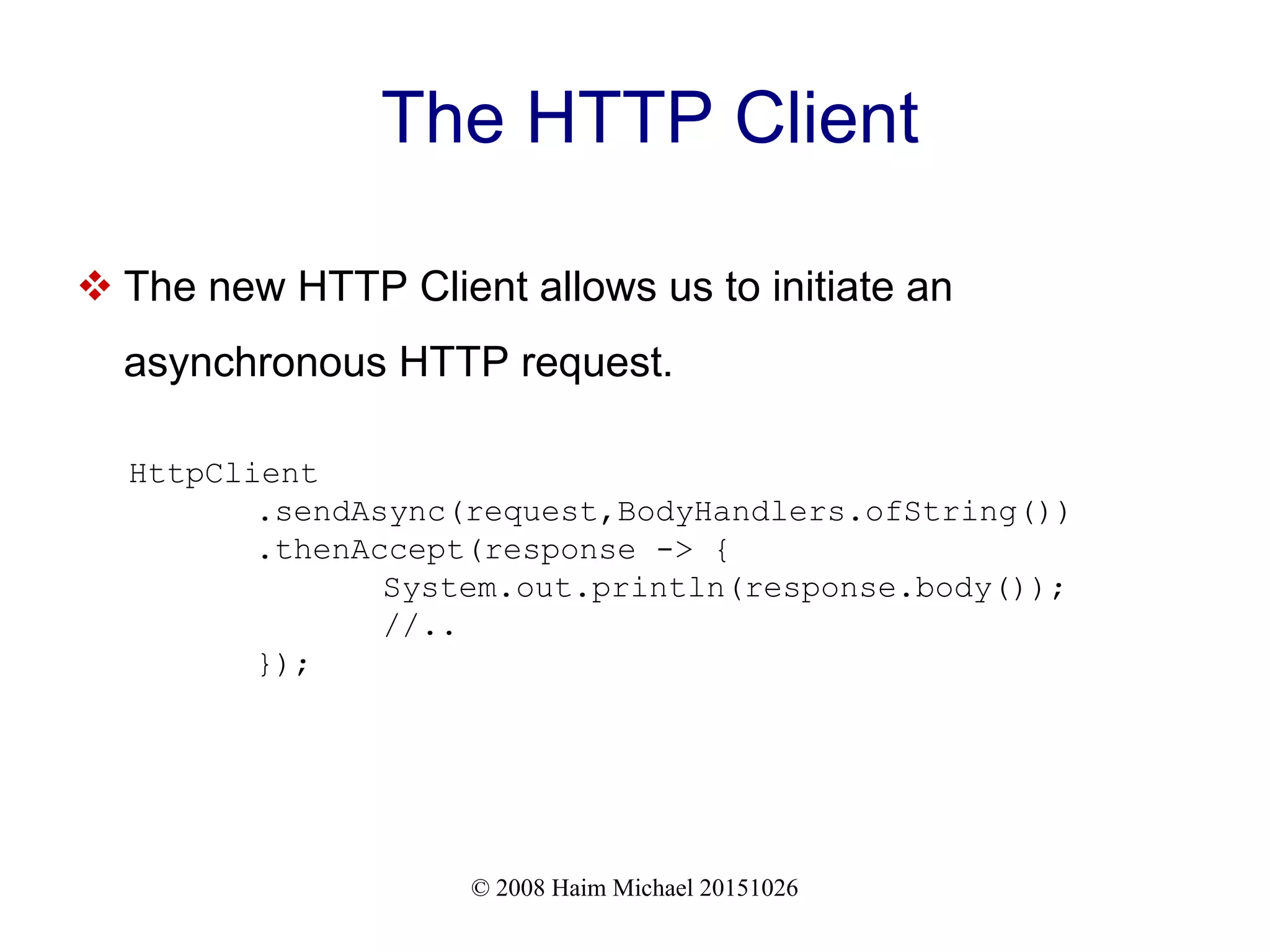
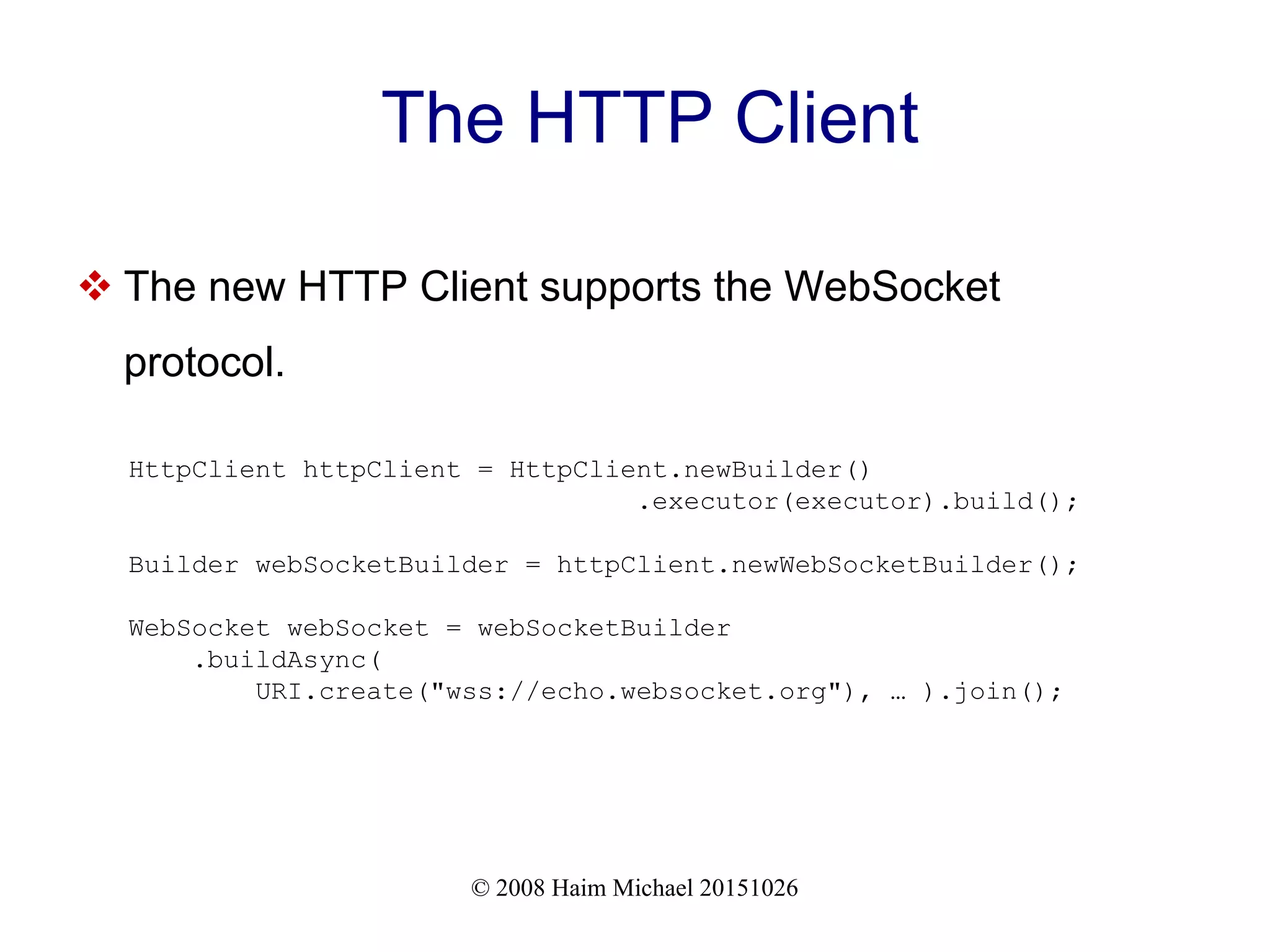
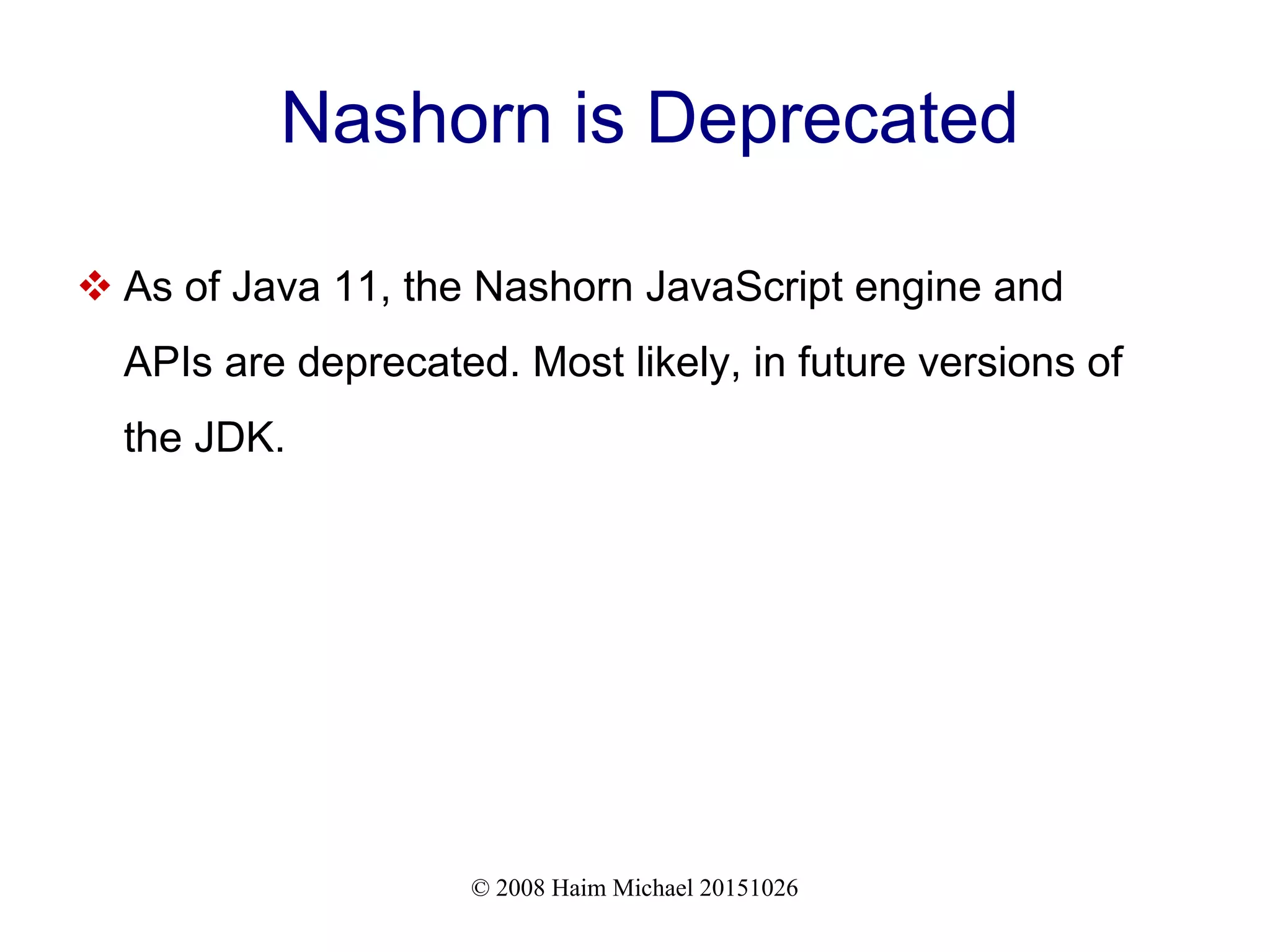
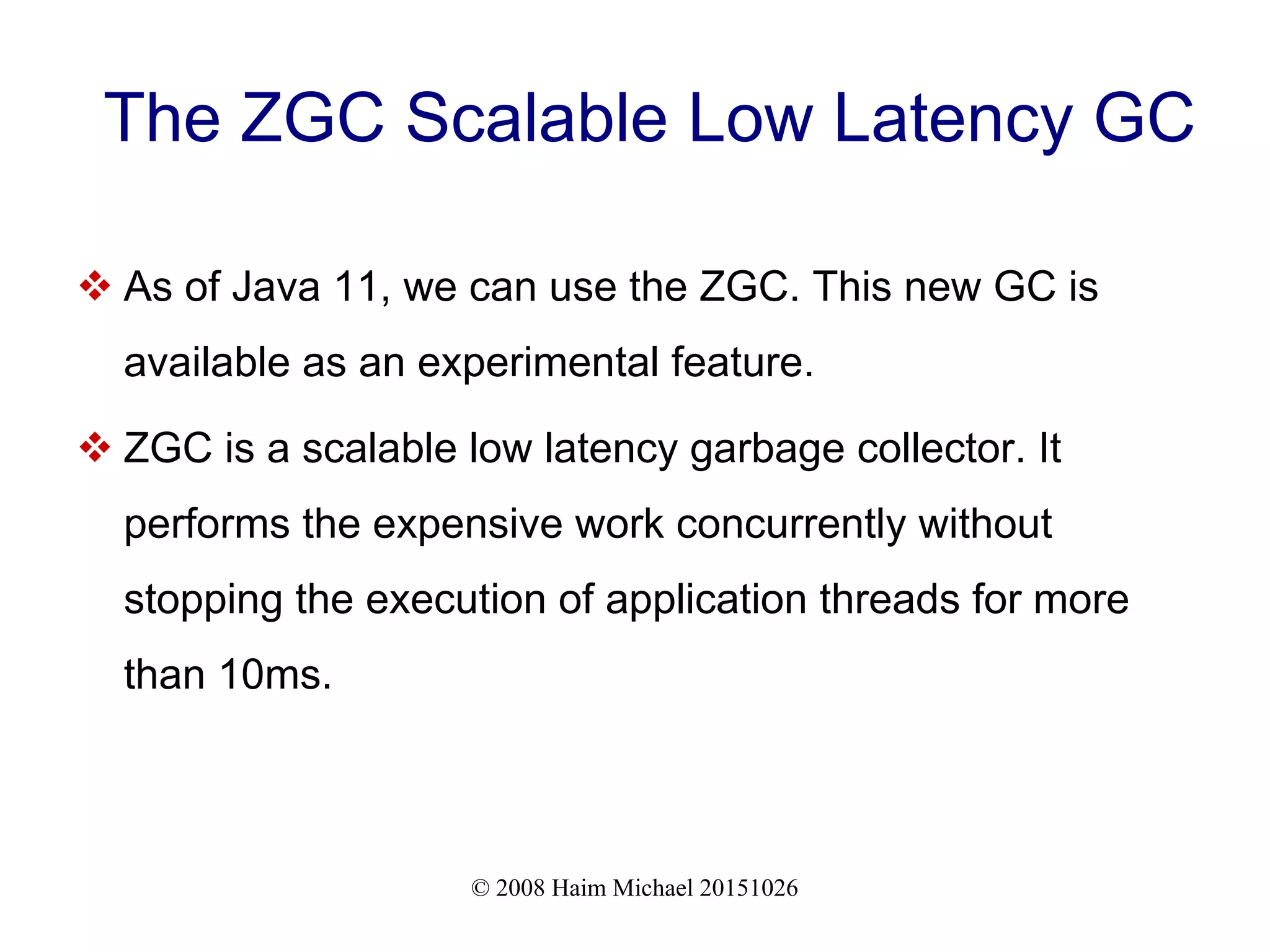
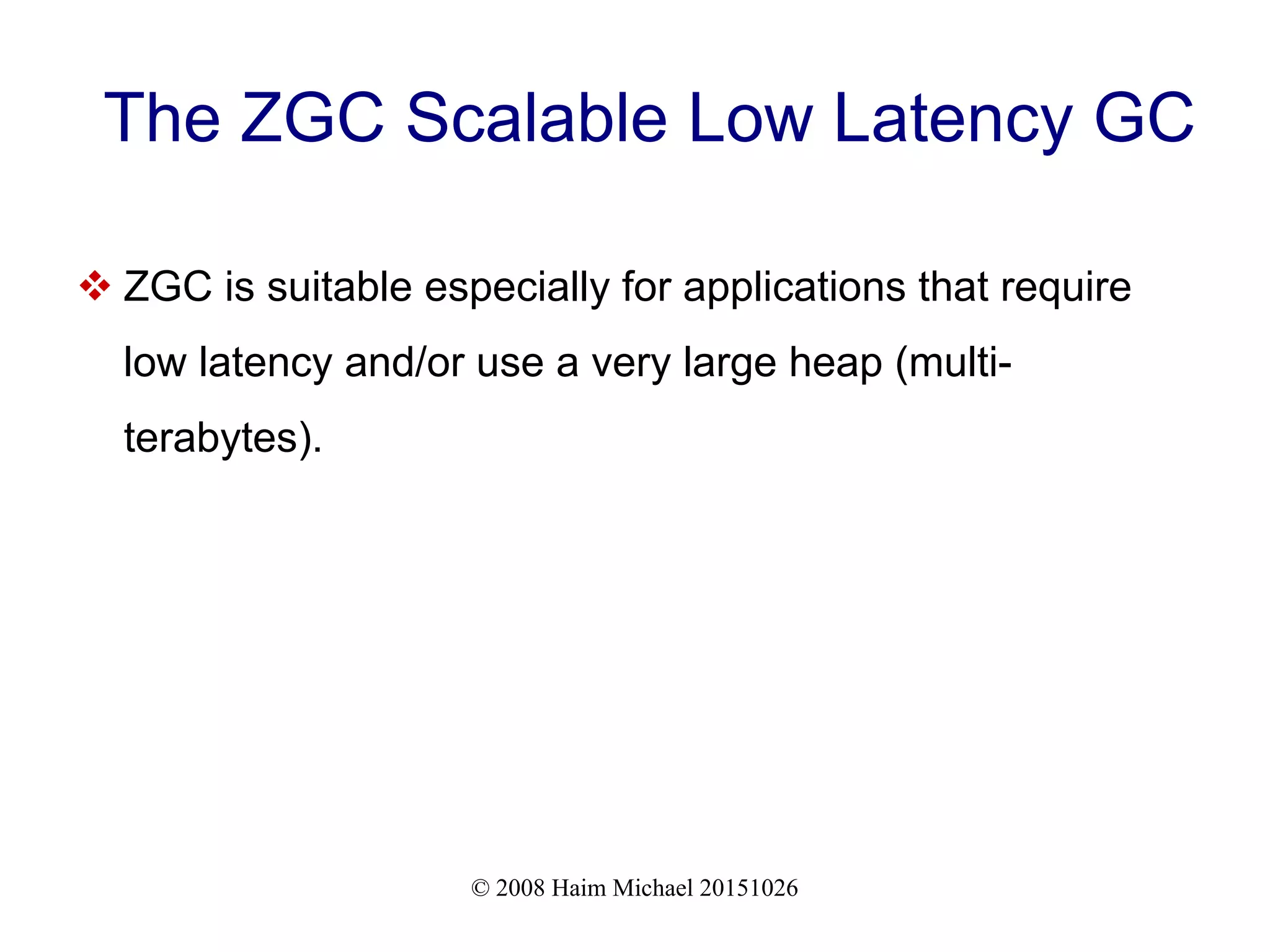
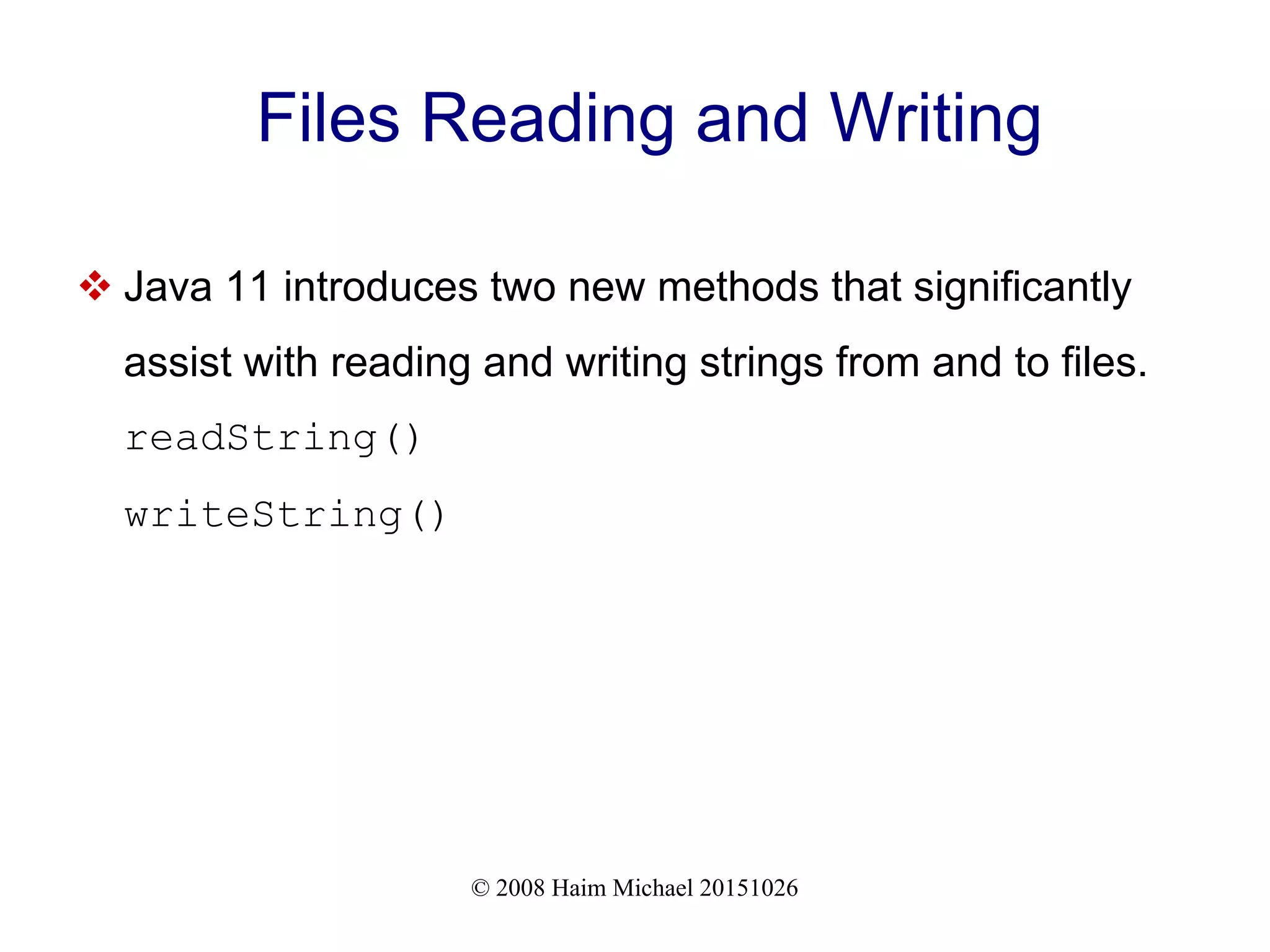
![© 2008 Haim Michael 20151026 Files Reading and Writing public class FilesReadingDemo { public static void main(String args[]) { try { Path path = FileSystems.getDefault() .getPath(".", "welove.txt"); String str = Files.readString(path); System.out.println(str); } catch (IOException e) { e.printStackTrace(); } }](https://image.slidesharecdn.com/java1120190604slides-190604211256/75/Java11-New-Features-32-2048.jpg)
![© 2008 Haim Michael 20151026 Files Reading and Writing public class FilesWritingDemo { public static void main(String args[]) { Path path = FileSystems.getDefault() .getPath(".", "welove.txt"); try { Files.writeString(path, "we love php", StandardOpenOption.APPEND); } catch (IOException e) { e.printStackTrace(); } } }](https://image.slidesharecdn.com/java1120190604slides-190604211256/75/Java11-New-Features-33-2048.jpg)
